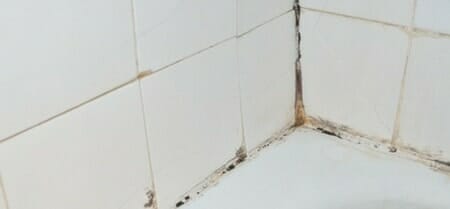How Moisture Leads to Bathroom Water Deterioration
How Moisture Leads to Bathroom Water Deterioration
Blog Article
Have you been trying to find critical information on How to Repair and Prevent Bathroom Water Damage??

Water damage often takes place in the bathroom due to the water used everyday. Often, the damage could be a little mold from the shower. Other times, it's substantial damage on your flooring. Whatever it is, it is always good to know the cause and stop it prior to it takes place.
This overview will experience some of the common sources of water damage in the shower room. We will likewise examine what you can do to avoid these causes from damaging your bathroom. Let's dive in.
These are the usual reasons you would have water damage in your washrooms as well as just how you can detect them:
Excess Wetness
It's amazing to have that lengthy shower and dash water while you hem and haw as well as imitate you're performing, however often these acts might trigger water damage to your washroom.
Spraying water around can create water to head to edges and also form molds. See just how you spread excess wetness around, as well as when you do it, clean it up to avoid damages.
Cracks in your wall tiles
Restroom wall tiles have been specifically designed for that objective. They safeguard the wall from moisture from people taking showers. However, they are not undestroyable.
Sometimes, your washroom wall ceramic tiles crack and allow some moisture to leak right into the wall surface. This could possibly damage the wall surface if you don't take any kind of activity. If you discover a fracture on your wall floor tiles, fix it immediately. Do not wait up until it ruins your wall surface.
Overruning bathrooms and sinks
As humans, often we make mistakes that might trigger some water damage in the shower room. As an example, leaving your sink tap on could trigger overflowing as well as damage to various other parts of the washroom with moisture.
Also, a faulty bathroom can create overflowing. As an example, a broken toilet deal with or other parts of the cistern. When this takes place, it might harm the flooring.
As quickly as you see an overruning sink or bathroom, call a plumber to aid take care of it quickly.
Ruptured or Leaking Pipelines
There are lots of pipes carrying water to different parts of your bathroom. Some pipelines take water to the toilet, the sink, the faucets, the shower, and lots of other areas. They crisscross the little area of the bathroom.
From time to time, these pipes could obtain rusty and also burst. Various other times, human action might cause them to leakage. When this occurs, you'll locate water in the corners of your shower room or on the wall surface.
To identify this, keep an eye out for gurgling wall surfaces, molds, or mildew. Call a professional emergency plumbing professional to repair this when it occurs.
Roof Leakages
Often, the trouble of water damage to the bathroom may not come from the shower room. For example, a roofing leak might cause damages to the washroom ceiling. You can detect the damage done by considering the water stains on the ceiling.
If you find water discolorations on your ceiling, check the roof to see if it's harmed. After that, call an expert to aid fix the concern.
Final thought
Water damage to your bathroom can be annoying. Nonetheless, you can handle it if you avoid several of the reasons mentioned in this guide. Call a specialist emergency plumber if you discover any kind of extreme damages.
How to Prevent Water Damage in Your Bathroom?
Water damage repair is an expensive, meticulous, and lengthy process. Unfortunately, bathrooms are the most susceptible rooms to water damage due to toilets, showers, and sinks. Pipes and fixtures wear out over time and are not immune to damage. But all is not lost, as there are ways to prevent water damage from occurring in your bathroom.
Check Your Plumbing
Nothing lasts forever, especially pipes, which can rust and begin leaking over time. You should periodically conduct pipe inspections and pay attention for any musty smells or water stains that may indicate you need water damage repair. Here are some things to check:
Frequently test valves for your toilet, shower, and sink to ensure they are properly working. Check faucet supply lines hidden under vanities and replace when needed. Replace cracked or deteriorating caulking along sinks, tubs, and showers. If you notice a clog in your sink, call in a professional. Since you can’t check the pipes in the wall, keep an eye out for stains, drywall bubbling, musty smells, and excess moisture; if the bathroom is on a second level, check the ceiling of the room directly below for these signs. Don’t Overwork Your Toilet
One of the most common reasons bathrooms need water damage repair is due to overflowing toilets. Save yourself the hassle of cleanup by being mindful and not pushing your toilet to extreme limits. If you have young children, it is especially important to keep an eye on them when they are in the bathroom and to teach them how to avoid clogging the toilet. Here are some more tips to help prevent your toilet from overflowing:
If you have a septic tank, only use septic-safe toilet paper Do not flush anything down the toilet besides toilet paper; items like diapers and sanitary napkins will clog the piping Pay attention to your toilet’s water level: If it’s low, it could mean it is partially clogged or that there is a crack in the toilet bowl https://www.alure.com/home-improvements-blog/resources/how-to-prevent-water-damage-in-your-bathroom

As a keen person who reads on How to Repair and Prevent Bathroom Water Damage?, I figured sharing that section was valuable. Kindly take a moment to promote this blog if you enjoyed it. Thanks for going through it.
Book Your Installation Report this page